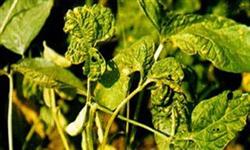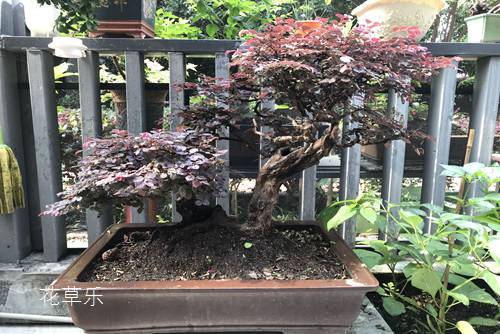top blight Learn more about top blight
-
Prevention and control of soybean top blight

Soybean top blight, also known as bud blight, is one of the soybean virus diseases that have a great impact on yield. Due to different periods of onset, the loss caused was 25% to 100%. Similar symptoms appeared on the foreign varieties introduced in Shandong Province in 1962, and then there were similar symptoms in Hebei, Beijing, Liaoning, Jilin, Heilongjiang and other places.
2018-09-12 -
Control of top blight of growing soybean

Wudalianchi City is one of the main soybean producing areas in Heilongjiang Province and a major commodity grain county in the country. The sown area of soybean accounts for more than 50% of the total sown area every year. Soybean top blight only occurred sporadically in the past, but there was no large-scale occurrence in 1998.
2020-11-08 Species soybeans top blight disease control Wudalianchi City is -
The latest rose leaf blight control methods

Leaf blight is one of the common diseases of rose. The infected rose will first appear spots from the top or edge of the leaves. With the occurrence of the disease, the spots will be irregular from small to large, and the color will be from reddish brown to grayish brown. Finally, the spots will be contiguous into large dead spots.
2020-11-10 latest rose leaf blight disease control method yes -
Beware of the outbreak of cotton red leaf stem blight after heavy rain

Recently, the cotton area is generally heavy rain, for cotton after a long drought, it is easy to break out red leaf stem blight. Red leaf stem blight is a physiological disease. It starts from the growing point of the main stem or the top of the fruit branch, and generally develops from top to bottom and from outside to inside. The main stem withers to death but the anatomical vessels are achromatic. The root system is thick and short, and the fibrous root is less poorly developed. Cotton red leaf stem blight outbreak is caused by extensive cultivation of cotton fields, poor development of cotton roots, poor drainage of cotton fields, partial application of nitrogen fertilizer, vigorous growth of cotton,
2019-01-15 -
The bonsai is serious (standing blight) every year. What causes it and how to prevent it?

The follow-up tree is an evergreen plant with luxuriant branches and leaves, graceful posture, resistance to pruning, resistance to flat binding, blooming season, full of flowers, very spectacular. When different lines mature, the leaf color and flower color are different, and the leaf size is also different, which is the preferred bonsai stump for flower friends. Huipian (blight) is a common disease.
2019-04-24 -
What is the control method of shoot blight of Larix principis-rupprechtii?

Larix principis-rupprechtii shoot blight is a serious disease in Larix principis-rupprechtii forest and one of the forestry quarantine pests in China, so what is the control method of Larix principis-rupprechtii shoot blight? 1. Symptoms of Larix principis-rupprechtii shoot blight the disease only occurred in the new year.
2020-11-09 North China Larix gmelinii withered shoot disease control method what is it -
How to control pea bud blight

Green beans and sprouts in peas are very popular with consumers. However, in the process of production, the quality and yield are often affected by some physiological obstacles and bacterial invasion. Such as bud blight, also known as wet rot or head rot, there are two obvious symptoms, one is at the top of the tender stem.
2020-11-08 Beans bean sprouts blight how to control peas medium green beans and -
Control methods of Rose Leaf Blight

Control methods of Rose Leaf Blight
2018-07-06 -
Spruce snow blight

[distribution and harm] Foreign countries are distributed in North America, Northern Europe and Central Asia, harming European spruce (Piceaabies), white spruce (P.glauca), black spruce (P.mariana) and so on. It is distributed in Tianshan Mountain, Altai Mountain, Western Junggar Mountain and Kunqu Mountain in China. Damage to spruce (P.schrenkiana), Siberian spruce (P.obovata), Qinghai spruce (P.crassifolia) and Sichuan spruce (P.balfouria7)
2019-01-16 -
Control of frost blight of growing litchi

Litchi from young fruit to ripe fruit, fruit stalk and fruiting branchlets can be damaged by litchi downy blight, and the leaves can also occur at high humidity. Local chlorosis on the symptomatic leaves, white mildew layer on the back, fruiting body of the pathogen, but usually at the peak of the disease, the leaves have aged, so the field
2020-11-08 Species litchi frost blight disease control from childhood fruit to -
Introduction to the manifestations and control measures of quenching disease and blight disease of herbaceous flowers

Sudden fall and blight are the main diseases in the seedling stage of herbaceous flowers. Cockscomb flower, red string, marigold, flat-top impatiens and so on are very easy to be infected with this disease. The two pathogens are different, the main pathogen of quenching disease is Rhizoctonia solani, and the main pathogen of Rhizoctonia solani is Rhizoctonia solani, but their control methods are similar.
2018-08-26 -
Four passes to control rice sheath blight

In recent years, sheath blight has become the most important disease of rice, and has four major characteristics: first, a wide range of occurrence. Second, there are very few varieties resistant to sheath blight. Third, the harm is becoming more and more serious, even causing lodging through the top. Fourth, the disease is first caused by the lower part of the rice plant, which is easy to ignore and miss the favorable opportunity for prevention and control. It is the key to strictly control the four hurdles in the prevention and control strategy. 1. Salvage sclerotia sheath blight mainly overwinters in rice fields in the form of sclerotia. When overwintering sclerotia pass through winter and spring to early rice transplanting, 60% to 70% of sclerotia can germinate. Most of the sclerotia are lighter than water and longer.
2019-01-16 -
How is corn baldness caused? How to prevent and cure it?

Corn baldness refers to the phenomenon that the top of corn ear is not strong and the grain is not full, commonly known as bald or bald tip, which is one of the main reasons that affect the stable yield of corn, and when it is serious, it can reduce the yield by 20% and 30%. Therefore, effective measures should be taken to reduce and prevent baldness in production.
2020-11-09 Corn baldness now like how caused control -
Key points of Prevention and Control of Stem Blight of Carnation

Main points of identification: stem blight of carnation affects the root, stem and leaf sheath of the plant. The diseased part turned brown, the leaves withered and yellowed from bottom to top, the stem dried up in the earth, and the stem pith turned brown and rotten. Occurrence characteristics: the pathogen is fungus. The pathogen overwinters in the soil as chlamydospores or mycelia in diseased remains.
2018-10-21 -
High temperature and humidity to prevent Sesame Diseases

Recently, some farmers reported that some sesame leaves curled up and wilted, some reflected that sesame leaves wilted sharply from the top down, and some sesame leaves withered from the bottom up. What diseases are they? Farmers are also confused and have asked agricultural technicians to give technical guidance on how to prevent and control these diseases. Judging from the current climatic factors, high temperature accompanied by humidity is easy to induce sesame disease, especially in sesame land with poor drainage, low terrain or continuous cropping. Sesame disease reflected from farmers all over the country
2019-01-16 -
What symptoms does balsam pear blight have? What is the method of prevention and control?

Balsam pear is a kind of vegetable with special bitter taste, although it tastes bitter, it has the effect of clearing away heat and detoxification, so it is very suitable for summer consumption. Balsam pear blight is easy to occur in the process of balsam pear planting due to improper management and other reasons, so where is the disease?
2020-11-08 Balsam pear blight have what symptoms control methods what is -
Three inducing factors of Red Leaf Stem Blight in Cotton

Cotton red leaf stem blight is a physiological disease caused by potassium deficiency, which occurs in the middle and later stages of cotton growth, especially in dry years. The disease of cotton in the field generally begins to show in the bud stage, and the disease is the most serious in the boll opening stage. The symptoms were mainly on the leaves, and the diseased leaves developed from the top to the bottom and from the outside to the inside. The diseased leaves began to lose green from the edge, first yellow, then red spots, and finally the whole leaf turned red, the mesophyll thickened, wrinkled and brittle, and the veins remained green. When the disease is serious, the leaves of the whole plant turn red and brown after losing green, and the leaves scorch and fall off into smooth rods.
2019-01-16 -
Picture: tomato disease Daquan, prevention methods, please collect!

Tomato is one of the common vegetables, which can be eaten raw or cooked into gourmet food. Now many people will grow tomatoes at home, but because many people grow tomatoes for the first time, they have no planting experience before. When there are some diseases in tomatoes,
2020-11-09 Pictures tomatoes diseases Daquan prevention methods please collect hide -
The blight of lily

Symptoms: the disease often occurs on the tender leaves of the plant, and stems and flowers can also be damaged. At the initial stage of the disease, oil-stained spots appeared on the susceptible leaves, and then gradually expanded into grayish green. When the disease was serious, the leaves and flowers were soft rot. Near the ground of the susceptible stem, the diseased part was water-stained, browned, wrinkled, the plant wilted, lodged and died. The bulb was infected when it sprouted and only the top of the young stem withered. When wet, the disease produces a white mildew layer. Pathogen: the pathogen is Phytophthoracactorum (Leb.et)
2019-01-16 -
Control of spruce red blight

In recent years, with the increase in the number of spruce planting, spruce red blight occurred seriously, and some closed forest belts were as high as 50%, seriously weakening the tree potential and even causing dead trees. The incidence of the disease is rapid, from the bottom of the tree to the tree, the outer edge of the crown to the inner chamber, the base of compound leaves to the top. As many as 10 days, as little as 1 week, can cause the whole plant leaves to turn yellow, and then fall off. The disease is caused by fungi. When the temperature suddenly changes and the humidity increases, the tree will become sick. The diseased leaves appear small brown spots at the beginning, then expand into dark brown, and the diseased spots are produced when the rain is wet.
2019-01-15
